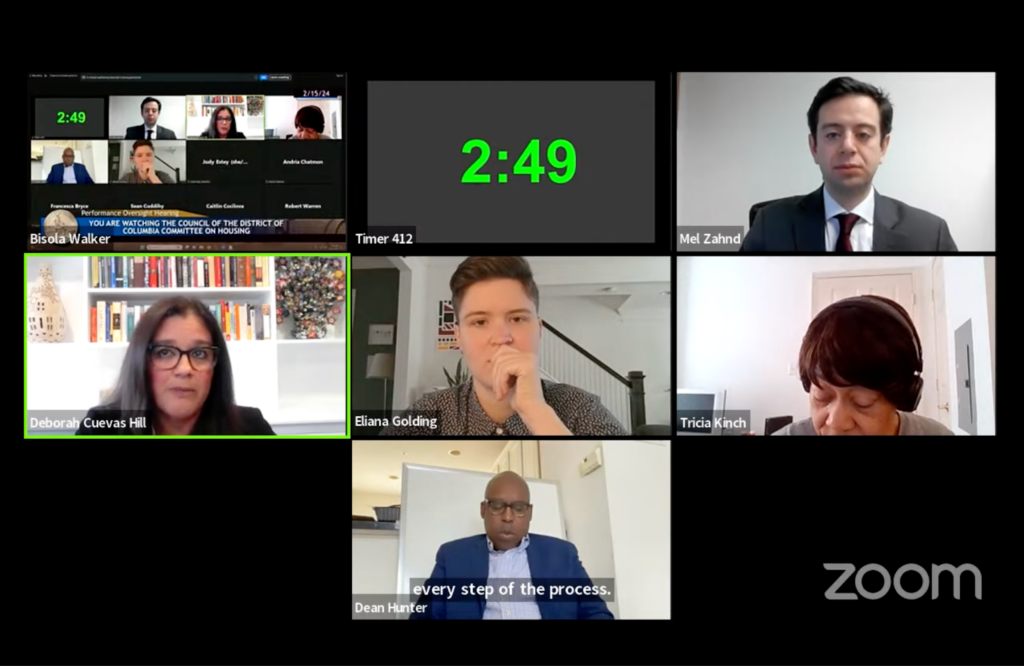After months of meetings and discussion, the Historic Preservation Review Board unanimously voted Thursday to approve a section of the Barry Farm Dwellings in Southeast D.C. as a historic landmark.
In April 2019, Empower D.C. — an organization whose mission is to “enhance, improve and promote the self-advocacy of low- and moderate- income D.C. residents” — and the Barry Farm Tenants and Allies Association submitted a nomination to the HPRB that sought to preserve a large area in the historic neighborhood. But after a handful of meetings since then, it was determined that only a small portion would be approved as a historic landmark. The proposed area contained 31 buildings in various conditions.
On Jan. 30, that area’s boundaries were finalized, with the board declaring a section in the northwest corner — home to five buildings — as a historic landmark.
“Although we were hoping for a more significant designation, I can’t wait to see the whole property complete with a Barry Farm museum that represents the full vision and input of Barry Farm residents,” Detrice Belt, president of the Barry Farm Tenants and Allies Association, said in a press release.
At a Dec. 5 meeting, the HPRB adopted a motion that stated while not every building in Barry Farm could be preserved, “The final identification of a designated landmark should emphasize associations with significant persons, an authentic setting of buildings and landscape, and ability to create a meaningful commemorative site well integrated into the rebuilt community.”
[Read more: Review board done seeking input as Barry Farm historic landmark decision nears]
The motion also specified that a museum and cultural center should be built to maintain the area’s rich history, which dates back more than 150 years.
The neighborhood housed freed slaves following the Civil War. It was also home to Etta Mae Horn and Lillian Wright, prominent activists in the mid-20th century who spearheaded a group called the “Band of Angels” that served as a tenants’ council for Barry Farm.
Typically, the applicant — in this case, the BFTAA and Empower D.C. — will submit a boundary proposal for the landmark designation and the State Historic Preservation Office will then conduct independent research before making their own proposal. The SPHO’s final proposal for Barry Farm included only four buildings on one side of Stevens Road, but the HPRB agreed to include an additional building across the street.
“It’s important to extend the boundary across the street to include the building on the other side because it provides for an opportunity to retain more of the public housing context and allows for that story to be told,” said Gretchen Pfaehler, a member of the review board.
This all comes after the D.C. Council voted in 2006 to approve the redevelopment of Barry Farm, which — under the New Communities Initiative — was set to “transform the public housing development into a mixed-income, mixed-use community.”
In 2014, the D.C. Zoning Commission approved redevelopment plans for Barry Farm but the D.C. Court of Appeals shot down the plans in 2018, supporting concerns that some residents would be displaced due to limited affordable housing in the new mixed-income neighborhood. Despite the ruling, demolition was allowed to continue. The April nomination for historic designation was filed after demolition on the site had begun. Residents raised concerns that the redevelopment would erase Barry Farm’s history.
[Read more: Barry Farm residents seek historic status to preserve community and character]
The final decision on Jan. 30 was a compromise that preserves a section of the neighborhood while the rest of the Barry Farm Dwellings are slated to be overhauled. A new plan must still be approved before construction can begin.
In a press release the same day the board handed down its decision, Daniel del Pielago — the organizing director for Empower D.C. — expressed disappointment that the final decision diminished the original goal of a much larger landmark designation.
“Throughout this process we have been asked to compromise our true vision for this historic landmark and this proves how little weight is given to community input in projects that involve the mayor and politically connected developers,” del Pielago wrote.
In a Jan. 9 tweet, Empower D.C. claimed the development team demolished parts of buildings along Stevens Road that were within the organization’s proposed landmark boundary. The D.C. Housing Authority’s development partner, Preservation of Affordable Housing, denied the allegation.
Linda Mercado Greene, another member of the HPRB, said she has lived in Ward 8, where Barry Farm is located, for 20 years and that the residents she talked to were all in support of at least some historical designation.
In the end, the review board worked with both sides to find a solution.
“No one is going to deny the fact that most of those properties were in very, very bad shape and that we need a new beginning while preserving the past,” Mercado Greene said.








